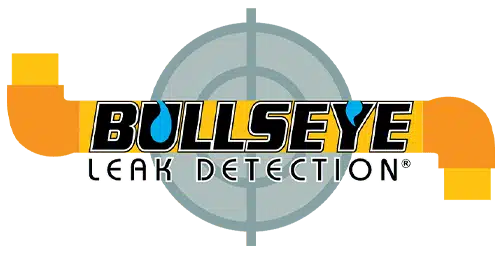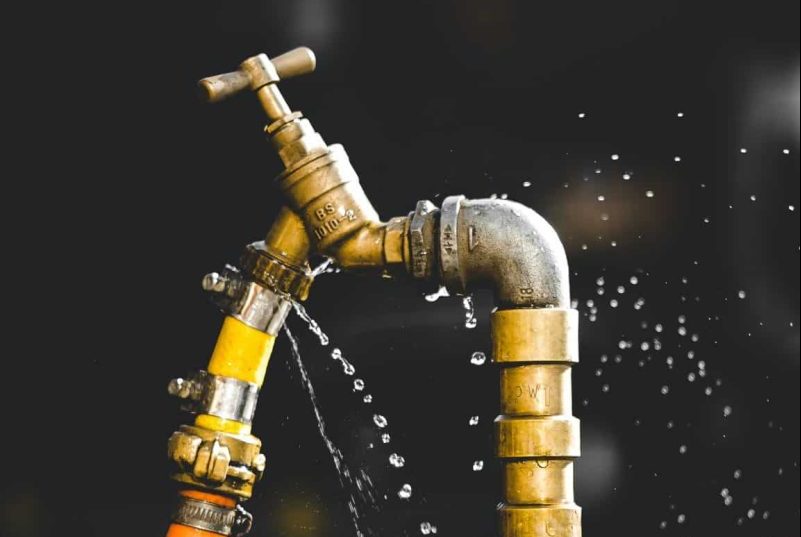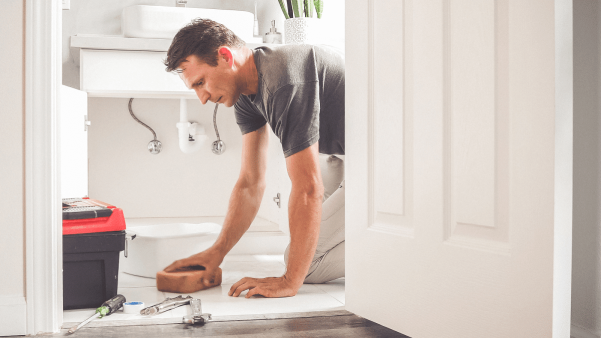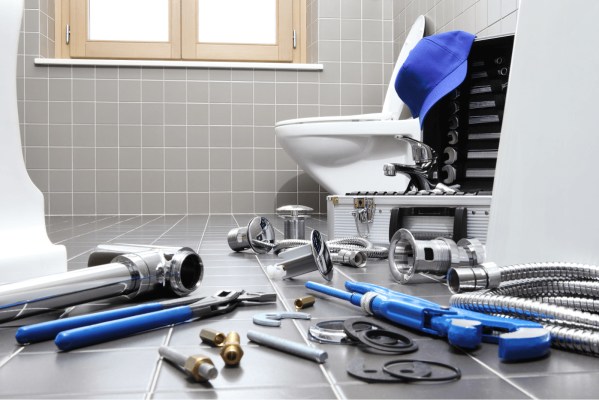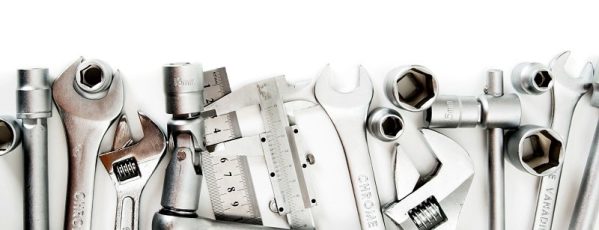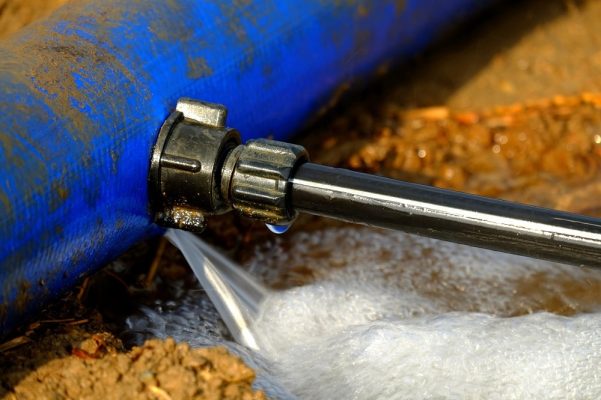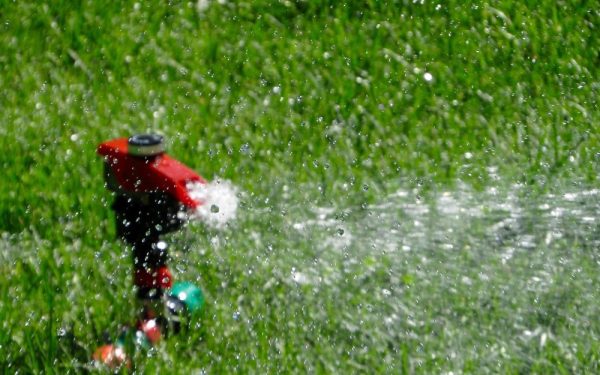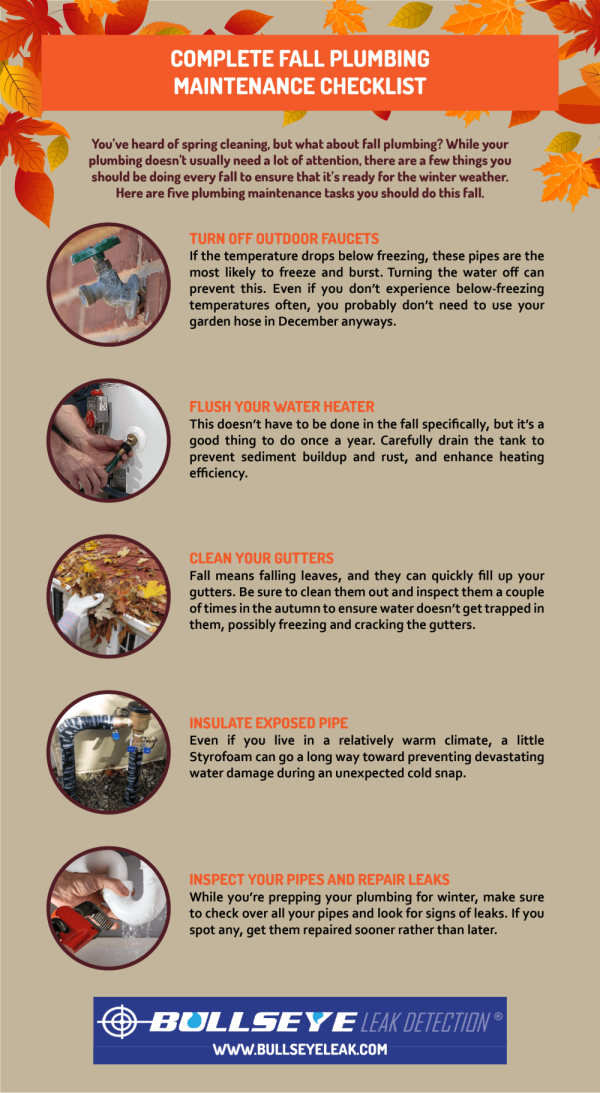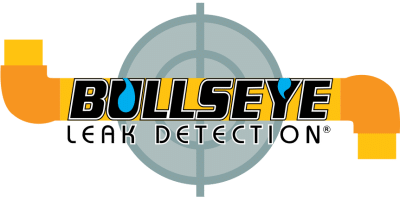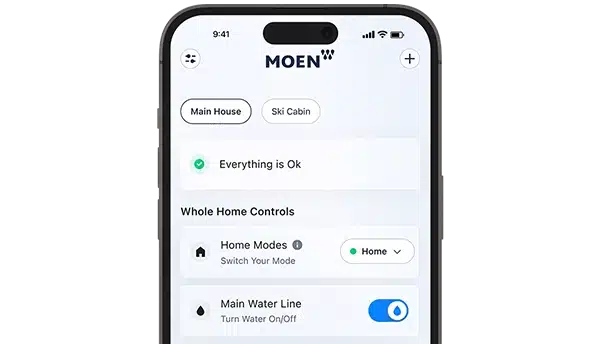Plumbing inspections usually occur when someone is interested in buying or renting a home. They may ask a local plumber to check the property’s plumbing for signs of damage. A professional in plumbing repair and leak detection in Sacramento, CA, will look for simple problems like poor water and issues like dangerous leaks between walls–a job for a dedicated leak detection service. Failing a plumbing inspection can mean losing out on a potential buyer or renter.
what an inspection entails and how to increase your chances of passing
Bathroom Inspection
Plumbers will first check your bathrooms for any signs of leaks. Leaks from under-sink pipes and around the base of toilets are particularly common. Thankfully, if they find a leak, they’ll get right to leak repair. They’ll also check for proper aeration, good drainage, water pressure, and any signs of calcium buildup or caulking deterioration. They’ll also check for proper hot and cold water releases. This is particularly important in the shower and bathtub. Uneven water temperature or a lack of warm, moderate water temperatures are signs of problems with the property’s water heater.
A plumber will also check the toilet for good flushing, noise, stability, and issues like running. A plumber may also look for water damage around the base of the toilet and under the sink, where slow and hard-to-detect leaks may have rotted away surrounding materials.
Kitchen Inspection
A proper plumbing inspection will also include a kitchen check. They’ll check for all the above bathroom sink issues in the kitchen sink, including signs of leaks or clogs. A plumber will check the garbage disposal for buildup or slow drainage as well. A plumber will inspect the shutoff valves that feed the faucet, dishwasher, and refrigerator for tightness and durability. They may also check to ensure that the fridge and dishwasher drain properly. If the fridge has an ice maker or water dispenser, they’ll inspect the filter associated with this system for cleanliness and signs of age. There is also a water supply hose to most kitchen appliances. A plumbing inspection will test these hoses for leaks, poor fittings, or tears.
Other Appliances
A plumber will definitely check the water heater, clothes washing machine, outdoor faucets, sump pumps, main shutoff valves, and the many other home appliances that use water–even your air conditioner and outdoor irrigation system, depending on the plumber. The goal is to check all of these appliances for proper operation, good drainage, no leaks, and no rust. More importantly, a plumber will check for signs of leaks anywhere in your home that pipes are fed. They’ll check for blockage or leaks in the sewer main as well, which will lead to either the municipal sewer system or septic tank. If you have a septic tank, this system will also undergo an inspection.
How to Pass Inspections
There is clearly a great deal of checks on a plumber’s inspection list, and a plumber will work to protect their client from making a bad investment. So how can you get through a plumbing inspection and pass without a hitch? Just hire your own plumbing service to inspect and repair any problem areas. They can handle all of the above issues and take care of them before your potential buyer or tenant conducts an independent inspection. While any layperson could easily clean an aerator or check their water heater temperature, issues like water leak repair and prevention are the specialty of a trained plumber.
Call Bullseye Leak Detection, Inc., to maintain and repair your plumbing prior to an inspection, or if you’re interested in having a property inspected. We’re the most trusted service for identifying a home water leak in Sacramento, as well as an intervention to make your property safe.
Home Plumbing Maintenance Checklist
Regular home maintenance tasks are an important part of being a homeowner. Performing annual or semi-annual checks of all of your home’s systems can prevent expensive repairs later and ensure that all of your systems are functioning at peak efficiency. If you don’t typically pay attention to your pipes and plumbing fixtures until a problem arises, it’s time to change that. Here’s a list of what you should be checking every year to maintain your home’s plumbing in Sacramento, CA.
Check for Leaks
You probably assume that you’ll notice a leak relatively quickly, but this isn’t always true. So, it’s worth taking the time now and then to inspect your plumbing for any leaks thoroughly. Here are some places to check:
Toilets
Check that the flappers are sealing tightly so that the toilet doesn’t run more often than it needs to. It would help if you also looked around the base of the toilet for any moisture pooling there.
Faucets
Turn on all the faucets to look for water leaking around the handles or faucet base. Look under the sinks, too for any leaks or drips from those pipes.
Showerheads
Turn it on and check for any stray spray or drips around the head and neck of the shower.
Appliances
Check for water pooling under dishwashers, washing machines, and refrigerators. You should also check your water heater or boiler.
Springtime is also a good time to thoroughly inspect your outdoor spigots and garden hoses for cracks and leaks before you start using them regularly on your lawn. If you have an automatic sprinkler system, be sure to inspect your sprinkler lines and observe them operating the first time you run them in the spring.
Test Shut-Off Valves
Water supply shut-off valves aren’t something that you need to use very often—at least, we hope not. But when you need to use them, you must know how to operate them and work properly. So, testing your shut-off valves annually has two purposes: ensuring you know where the valves are and how they work and ensuring that they work correctly.
Test the shut-off valves for every appliance in your home. You should also test the emergency shut-off that will cut off the water supply to your entire home.
Flush Your Water Heater
It’s a good idea to flush your water heater annually. This helps to remove sediment buildup in the bottom of your water tank. The buildup can impact the efficiency and overall water storage capacity for your water heater, leading to insufficient hot water in your home. Sediment can also cause the tank to start leaking and require you to replace it sooner.
If you have a tankless water heater, you don’t need to worry about this.
Inspect Visible Pipes
Take the time to inspect all pipes that are visible in your home. This includes pipes under the sink, near appliances, and anywhere else that you can easily view the plumbing yourself. It would help if you were looking for any loose connections that need tightening—something you can easily handle yourself. Of course, you should also look for moisture or active leaks on the pipes themselves, but this is something you should have a professional fix if you find it. Finally, look for discoloration of your pipes, too; this could be a sign of corrosion, which means you may need to replace the pipes.
Reasons You Should Get Your Old Pipeline Inspected
Pipelines are incredibly essential to keep in good health; however, you might not have the experience or skillset to inspect your own pipes. By hiring a professional pipeline inspection company, you can ensure there is a steady product flow through your pipe network to satisfy your business standards. If you suspect your pipeline is under stress and needs an inspection, here are a few reasons to get one done, beginning with pipe network damage detection.
Damage Detection
It’s not always easy to detect damage to your pipeline, especially if you aren’t trained to do so. Getting your pipeline inspected today can help identify any product blockage, corrosion, and potential combustion, which can be a danger to your day-to-day operations. Not to mention, locating damage to your pipe network early can avoid hundreds of dollars in repair costs down the line.
Pre-Cleaning Inspection
Before you get your pipeline professionally cleaned, it’s always wise to get an inspection. This way, you can have a cleaning company focus on removing specific areas of debris build-up, rather than noticing the build-up after you spent a decent amount of money cleaning your pipe network. Although you may think to get an inspection before a cleaning is unnecessary, it can save your company both time and effort.
Ensure a Proper Cleaning
As crucial as it is to get an inspection of your pipeline before its cleaning, you should also consider the importance of having an inspection following the cleaning. If there’s an issue with your pipeline, even after getting it cleaned, there’s no point in wasting money pushing through product. It’s a more efficient process to invest money in routine inspections before and after a cleaning to ensure there is no remaining corrosion or build-up to your pipe network, which can lead to future problems with day-to-day operations.
Easily Identify Damage
Routine inspections to your pipeline can help you track any damage it’s sustaining and identify blockages as they form. This way, you can assess damage as soon as it arises, rather than be surprised when an outdated pipe network needs repair or replacement. Although regular inspections can cost your business a bit of money, it’s well worth the investment in the long run. Plus, you’ll be able to get to know a local pipeline inspection company, which can help perform regular maintenance quicker and more affordably whenever problems arise with your own pipe network.
Determine the Needs for Replacement
Depending on how old (outdated) your pipeline is, an inspection can determine whether or not you need a pipe, or your entire pipeline replaced. A qualified inspector can help you find the best materials to develop your new pipeline to prevent the same damage in the future and tips for preventing dangerous blockages, which can affect regular business operations. However, you shouldn’t always take one professional’s advice; before getting your pipe network replaced, contact a few professionals in your area first.
Sweet Summertime: Plumbing Tips for the Summer
Summer is a fun and exciting time for most families. It often means more trips, more family activities, and more time outdoors. But with the kids out of school, it also often means more strain on your plumbing—more flushes of the toilet from summer guests, more showers after outdoor activities, and more loads of laundry to get out those grass stains. Keep reading to get a few tips on maintaining your plumbing throughout the summer from our water leak detection company in Sacramento, CA.
Avoid Clogs
More showers, baths, and toilet flushes can often lead to more frequent clogs. For starters, make sure you’re prepared for routine clogs by having a quality plunger and/or a three-foot auger. Between these two devices, you can probably handle most normal toilet clogs on your own.
It’s also important to ensure your children know what should and shouldn’t go down the toilet. You’ve probably already taught (or tried to teach) your kids not to put foreign objects like toys and rags into the toilet—even if they haven’t always listened in that regard. But what about the difference between facial tissue and toilet paper? Do they know why one should go into the garbage and one in the toilet? What about baby wipes and feminine hygiene products? Knowing exactly what should and shouldn’t go down your toilet can keep your pipes healthy and help you avoid a nasty clog that requires professional help.
For bathroom sinks and shower drains, hair and soap scum are the most common causes of clogs. The best way to prevent these is to use a drain strainer—a wire mesh device that’s placed right over the drain to catch hair and anything else from going down. While it might not be pleasant to have to clean that out after every shower, it’s a lot easier than trying to get a clog of scum-covered hair out of the drain.
Check Sprinkler Systems
Summertime is when your sprinklers will be doing the most work, so it’s a good time to check to ensure that this part of your plumbing is working properly. Check sprinkler heads for any that are broken, rusted, or damaged, and replace them. Turn on your system a little at a time, testing each zone as you go. Watch the sprinkler heads and the direction of their spray to ensure water isn’t running to the foundation of your home.
Also, if your system doesn’t have a rain sensor already, it’s a good time to get one. That way, you don’t have to worry about it turning on while it’s raining; some smart sprinkler systems can even access weather reports and avoid turning the system on if rain is expected soon.
Check Pipes for Leaks
Finally, take the time this summer to check all of your plumbing systems for leaks. Here are some of the most common areas that you should be checking:
- Faucets
- Pipes under the sinks
- Showerheads
- Tub spigots
- Bathtub structure
- Drinking water lines
- Water softeners
- Hot water heaters
- Outdoor spigots
- Toilet
- Pool or hot tub (if you have one)
You can also test your overall system to see if you have a leak: First, pick a time when you can go without water for an hour or two, and disconnect any systems that automatically use water (e.g., your ice maker). Check the water meter and jot down the numbers, then shut off your water for at least an hour. If the numbers are the same when you return, you don’t have any hidden leaks; if they’ve changed, you’ll need to find the leak.
Complete Fall Plumbing Maintenance Checklist
You’ve heard of spring cleaning, but what about fall plumbing? While your plumbing doesn’t usually need a lot of attention, there are a few things you should be doing every fall to ensure that it’s ready for the winter weather. Here are five plumbing maintenance tasks you should do this fall.
- Turn off outdoor faucets. If the temperature drops below freezing, these pipes are the most likely to freeze and burst. Turning the water off can prevent this. Even if you don’t experience below-freezing temperatures often, you probably don’t need to use your garden hose in December anyways.
- Flush your water heater. This doesn’t have to be done in the fall specifically, but it’s a good thing to do once a year. Carefully drain the tank to prevent sediment buildup and rust, and enhance heating efficiency.
- Clean your gutters. Fall means falling leaves, and they can quickly fill up your gutters. Be sure to clean them out and inspect them a couple of times in the autumn to ensure water doesn’t get trapped in them, possibly freezing and cracking the gutters.
- Insulate exposed pipes. Even if you live in a relatively warm climate, a little Styrofoam can go a long way toward preventing devastating water damage during an unexpected cold snap.
- Inspect your pipes and repair leaks. While you’re prepping your plumbing for winter, make sure to check over all your pipes and look for signs of leaks. If you spot any, get them repaired sooner rather than later.
